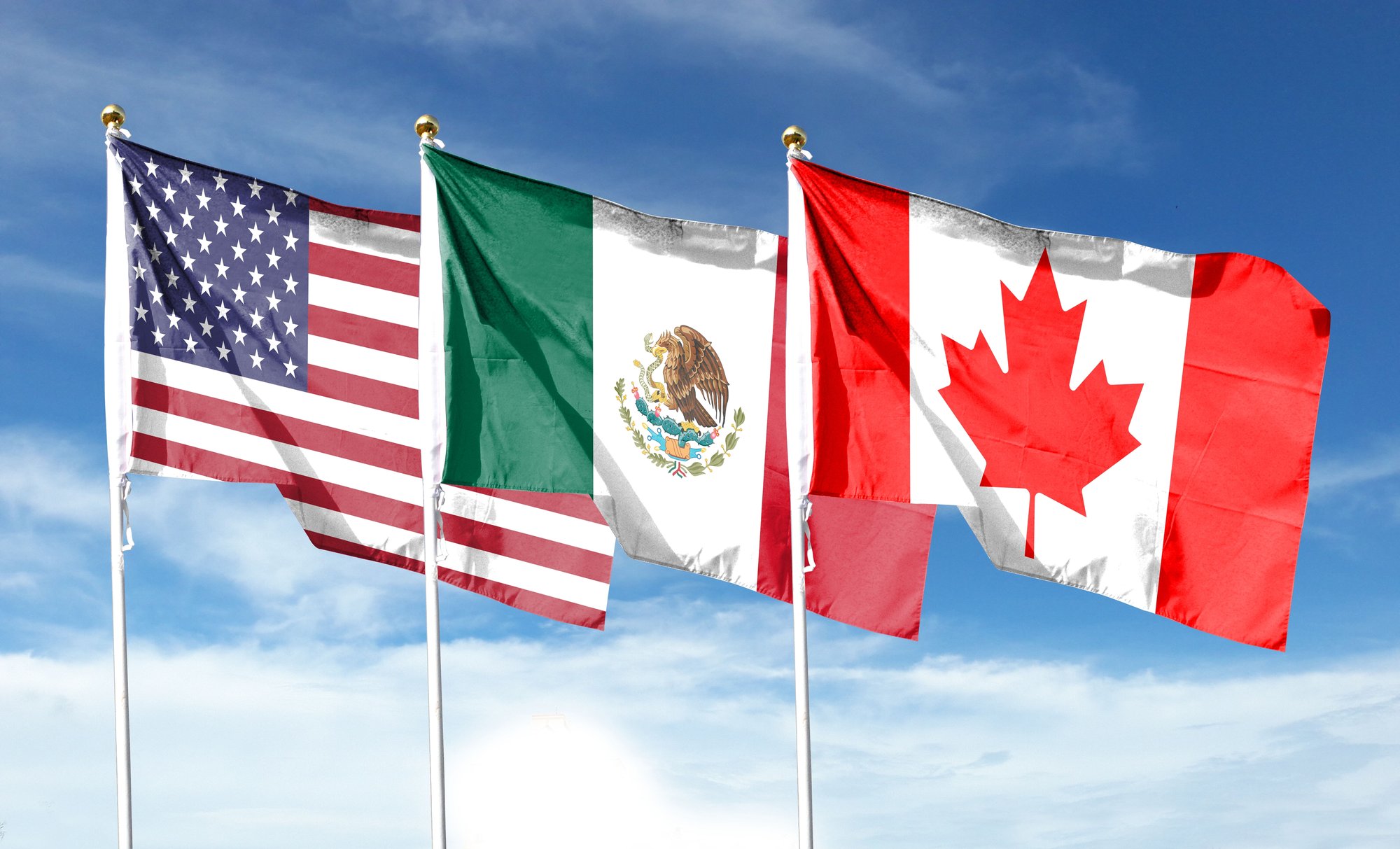Protect Your Margins with Landed Parcel Cost Management
Margins Are Under Attack—Here’s How to Fight Back
Parcel costs are rising and harder to predict, with outdated systems leaving shippers exposed to unexpected fees and shrinking margins. This article explores how smarter parcel cost management can help you take back control—one shipment at a time.

The rapid growth of eCommerce has transformed how goods move through the supply chain. As shippers expand their omni-channel fulfillment capabilities and diversify their carrier network to ship directly to consumers, parcel shipping is becoming significantly more complex, expensive, and far less predictable. And now, shifting global tariff policies are adding yet another layer of uncertainty, with retailers watching their landed duties, taxes, fees and shipping costs quietly (and sometimes not-so-quietly) eat into their profit margins.
Unfortunately, legacy logistics management systems weren’t built for this level of uncertainty. They were built for high-speed automation designed to reduce labor costs and accelerate order fulfillment. Parcel management amounted to negotiating single-source carrier contracts once every year and then printing labels at the end of a conveyor. But now, the cost variance between expected shipping costs and the actual carrier charges itemized on carrier invoices is widening.
To reduce margin erosion, shippers need a way of automating cost-effective decisions throughout the order to invoice cycle. This article takes a closer look at what’s impacting domestic and international parcel costs today and what shippers can do to reduce margin erosion.
Parcel Costs Are Less Predictable Than Ever
According to CSCMP’s 2024 State of Logistics Report, transportation now accounts for 63% of U.S. logistics spend, totaling $2.37 trillion, or 5.55% of GDP. Demand for fast, direct-to-consumer eCommerce has grown, driving parcel expenditures to new heights. Global parcel spend in 2024 was $474bb in 2024 and Business Research Insights expect it to grow to $737bb by 2033. Final mile delivery has become the single most expensive component of B2C supply chains, representing 41% of total costs.
To stay ahead of rising costs, parcel carrier pricing models have become more complex, introducing more variables including incentive-based discount tiers, dimensional weight rating, and an ever-expanding assortment of accessorial fees. All these cost factors vary widely across carriers and change constantly.
At the same time, consumers still expect free shipping, making parcel expenses more difficult for shippers to absorb. In response, shippers are diversifying their network of final mile carrier services. As a result, FedEx and UPS continue to lose market share to Amazon, USPS, regional carriers, and local courier networks. But parcel service fragmentation and market volatility has made it harder for merchants to decide how, when, and where to cost-effectively use carrier services.
Tariff Changes Are Making Global Shipping More Expensive
Shifts in tariff policies are adding even more complexity to final mile delivery cost control. Until recently, most low-value international shipments—anything under $800—were exempt from duties and taxes under de minimis rules. That exemption is now gone for “Goods made in China”, which means many routine cross-border parcel shipments are triggering import duties, taxes, and customs fees for sales that weren’t priced to absorb them, especially those with thin margins or free shipping baked in. For shippers, this translates into more unpredictable landed costs for every international order. Or worse, orders cancelled by consumers suddenly hit with surprise import costs.
Tariff enforcement also isn’t consistent. Countries have region-specific duties based on shipment value, product category, or origin, making it harder to standardize pricing or forecast costs with confidence. And even when businesses can anticipate cost increases, passing them on to customers often isn’t an option, particularly in competitive B2C markets where price sensitivity is high.
When raising prices isn’t feasible, the only real option is gaining better control over cross-border shipping costs. But most systems still lack the real-time logic needed to manage duties, taxes, and fees as they evolve. Without accurate landed cost calculations at checkout or shipment, companies rely on guesswork and often pay for it later.
How Parcel TMS Decision Intelligence Helps You Reduce Margin Erosion
Traditional eCommerce, OMS, WMS and parcel shipping systems were never designed to manage current parcel complexity and volatility. They focused on automation and throughput, usually for a single carrier. This has left merchants without the ability to make intelligent, cost-effective decisions at the scale and speed of eCommerce. Today, shippers need technology that can make data-driven, cost-effective decisions in real time at every step of the order-to-invoice cycle to reduce, avoid and recover costs wherever possible.
Modern parcel TMS platforms, like Sendflex, make it easy to enhance eCommerce, OMS, and WMS platforms with domestic and cross-border parcel decision intelligence. Configurable optimization rules enable logistics managers to respond quickly to market and regulatory changes without having to wait on IT resources. Here’s what that looks like in practice:
- Configurable business rules, high-speed optimization
Most legacy logistics systems rely on hard-coded programming to implement even the simplest parcel management business rules. In a volatile, ever-changing shipping environment, the inability to adapt quickly can have immediate cost ramifications and competitive impact.
Sendflex’s no-code optimization engine puts logistics managers back in control, with a self-help approach to dealing with market volatility without having to rely on overtaxed IT staff or outside programming resources. Business users can easily configure complex optimization rules in minutes to control carrier service selections, customer delivery preferences, cartonization methods, rate markups, cross border consolidation, and other variables that can help shippers better predict cost and reduce margin erosion.
Rather than rely on slow, unreliable carrier APIs, Sendflex processes millions of order optimization rules, rates, and times in transit per second. This opens the door to more accurate high-speed cost and delivery promise calculations during shopping carts and order allocation processes.
- Upfront (and guaranteed!) duty and tax calculations at checkout
Calculating duties and taxes at checkout is about speed, access, and integration. To display the right information to customers in real time, systems need continuous access to the latest import/export data, HS classifications, and tariff updates across hundreds of countries.
Sendflex integrates with FlavorCloud to deliver country-specific duties, taxes and import fee calculations directly in the shopping cart. This real-time sync ensures customers see precise, location-based costs before placing an order, reducing cart abandonment and minimizing the risk of charging too little or too much. Prepayment of guaranteed landed costs at checkout increases customer loyalty and more conversions.
- Transportation cost-effective packing
Retailers incur costs every day from poorly packed cartons. That’s because legacy logistics systems rely on static cubing logic or rules of thumb to determine packaging and ignore parcel transportation costs. This results in tiny SKUs packed in oversized boxes. Shippers pay the price in the form of unexpected dimensional weight adjustments, especially for more complex multi-SKU orders. Cross border dimensional weight fees are particularly onerous.
Sendflex integrates with Paccurate’s cartonization engine to ensure every order is packed in the most transportation cost-effective manner. This helps shippers predict costs more accurately in shopping carts and again in order allocation. Optimum packing methods are reinforced in fulfillment. This results in reduced carrier cost, corrugate waste, and carbon emissions, while making better use of premium international transportation capacity.
- Automated invoice reconciliation
Parcel invoices often include added fees or surcharges that were never expected in the pre-sales process. Most eCommerce and logistics systems don’t have the tools to avoid them. Shippers only realize the cost variances when carrier invoices arrive after customers have been billed for transportation. FlavorCloud offers a B2B air freight service with guaranteed landed costs and single invoice for all logistics, compliance, and brokerage orders.
Sendflex automates the reconciliation process by matching billed charges against expected costs and flagging discrepancies immediately. Whether it’s a missed rate adjustment or an unexpected surcharge, teams get visibility before the cost hits the P&L. Sendflex then tracks historical cost variances to better predict actual costs during the order to invoice process. The result? Improved margins by narrowing the expected vs. actual shipping cost gap.
- “What if” simulations
In addition to high-speed order processing, Sendflex’s in-platform optimization engine can apply business rules against historical shipping data and run “what if” analyses, such as:
- What if we had used Flavorcloud to orchestrate international parcel shipments last year? What impact would that have had on our cost and times in transit?
- What if we had shipped from a different DC?
- What if we had added a different sized carton? How would that have changed dimensional weight adjustments?
- What if we had negotiated a different dim factor?
What if simulation modeling enables shipping managers to measure cost control strategies using actual data and then refine optimization business rules to apply during execution processes.
A Smarter Way to Control Parcel Costs
Most retailers aren’t losing money because of one shipping mistake. They’re losing it slowly through avoidable fees, inaccurate data, and outdated systems that can’t keep up. When parcel decisions rely on static rules or manual workarounds, margin gets chipped away with every order.
Sendflex, FlavorCloud, and Paccurate give you the tools to stop that from happening. With real-time data, automated decision logic, and built-in cross-border intelligence, you can control parcel costs before they spiral.
If you’re tired of chasing down charges after the fact, it’s time to upgrade the way you manage shipping. Contact us to learn more about how Sendflex helps you take back control—one shipment at a time.
LEARN
Download
The Five Parcel TMS
Value Pillars
EBOOK
Learn why controlling costs, capacity, carbon, and customer experiences matters in the B2C delivery economy
Shippers who are used to relying on a primary parcel carrier with unlimited capacity must now manage a broader portfolio of carriers, all with different capabilities, performance records, constraints, and rate structures.
DELIVERY CONSULTATION
See What Sendflex Can Do for You
Are you struggling to keep up with the consumer demand for faster, cheaper delivery service options? Is it time for a smart multi-carrier parcel solution?
Whether deployed on premise or accessed from the cloud, our shipping platform apps and APIs support your entire extended enterprise: carrier selection, rating and routing, cartonization, shipping and drop shipping, tracking, and returns.
